About Sights – Svetitskhoveli (The Life Giving Pillar) Cathedral
Svetitskhoveli Cathedral (Georgian: სვეტიცხოველი) in the old capital of Mtskheta (Georgian: მცხეთა) stands on the site chosen by St. Nino as the place for the first church in Georgia.
Situated at the confluence of the Aragvi and Mtkvari rivers, the cathedral was built by architect Arsukidze in the early 11th century and is the place where Georgian kings were crowned and buried.
The cathedral is one of the most sacred places in Georgia and the place where Christ’s robe is said to be buried.
According to Georgian tradition, a Georgian Jew from Mtskheta named Elias was in Jerusalem when Jesus was crucified. He bought Jesus’ robe from a Roman soldier at Golgotha and brought it back to Georgia.
Upon his return to Mtskheta, he was met by his sister Sidonia who upon touching the robe immediately died from the emotions engendered by the holy object. The robe could not be removed from her grasp, so she was buried with it.
The place where Sidonia is buried, with Christ’s robe, is preserved in the Cathedral.
![]() Later, from her grave grew an enormous cedar tree. St. Nino (Georgian: წმინდა ნინო) ordered the cedar chopped down to build a church.
Later, from her grave grew an enormous cedar tree. St. Nino (Georgian: წმინდა ნინო) ordered the cedar chopped down to build a church.
From the cedar tree she had seven columns made for the church foundations.
The seventh column, however, had magical properties and rose by itself into the air.
After St. Nino prayed the whole night it returned to earth.
In Georgian sveti means “pillar” and tskhoveli means “life-giving” or “living”, hence the name of the cathedral.
An icon portraying this event can be seen in the cathedral.
It depicts Sidonia with an angel lifting the column in heaven.
St. Nino is in the foreground while King Mirian and his wife, Queen Nana, are presented to the right and left.
A small stone church was built inside the Cathedral at the end of the 13th and the beginning of the 14th century..
The church is a symbolic copy of the Chapel of Holy Sepulchre in Jerusalem.
It marks Svetitskhoveli as the second most sacred Christian place in the world (after the Church of Jerusalem).
In front of this stone chapel, the most westerly structure aligned with the columns between the aisle and the nave marks the place where St. Sidonia is buried.
The structure represents the Holy Life-giving Pillar above St. Sidonia’s grave.
The interior of the cathedral was originally covered with wall paintings but these were whitewashed over in the 1830s, when Czar Nicholas I was scheduled to visit Mtskheta.
In the end the Czar never came.
Today, after much careful restoration, fragments of a 13th-century Beast of the Apocalypse and figures of the Zodiac can be seen.
Ten Georgian kings are known to have been buried in the cathedral, although only six tombs have been found, all placed before the altar.
Svetitskhoveli is the second largest church building in Georgia, after the Sameba Cathedral in Tbilisi, and is listed as a UNESCO World Heritage Site along with other historical monuments of Mtskheta.
Admission to the cathedral and the other historical monuments in Mtskheta is free. We will be posting articles about Mtskheta’s other sights, including the 6th century monastery of Jvari and also Samtavro (Place of the Ruler), which, according to legend, is where St. Nino lived.
How to get there? Mtskheta is about 20 km from Tbilisi. Mini buses run regularly every day of the week between Tbilisi’s Didube market and the main street in Mtskheta.
Georgia About recommends a visit to Svetitskhoveli Cathedral
 CLICK on the logo to visit GEORGIA ABOUT on Facebook and see photos and news about Georgia. Click LIKE on the page and become a friend of GEORGIA ABOUT.
CLICK on the logo to visit GEORGIA ABOUT on Facebook and see photos and news about Georgia. Click LIKE on the page and become a friend of GEORGIA ABOUT.
Comments
27 Responses to “About Sights – Svetitskhoveli (The Life Giving Pillar) Cathedral”Trackbacks
Check out what others are saying...-
[…] traded by the Mtkvari River for at least 7,000 years, including at Georgia’s former capital Mtskheta (Georgian: მცხეთა) and in the area of the ”cave city” at […]
-
[…] 14, the Georgian Orthodox Church celebrated ‘Svetitskhovloba’. The celebration pays homage to Svetitskhoveli Cathedral (Georgian: სვეტიცხოველი) in the old capital of Mtskheta (Georgian: […]

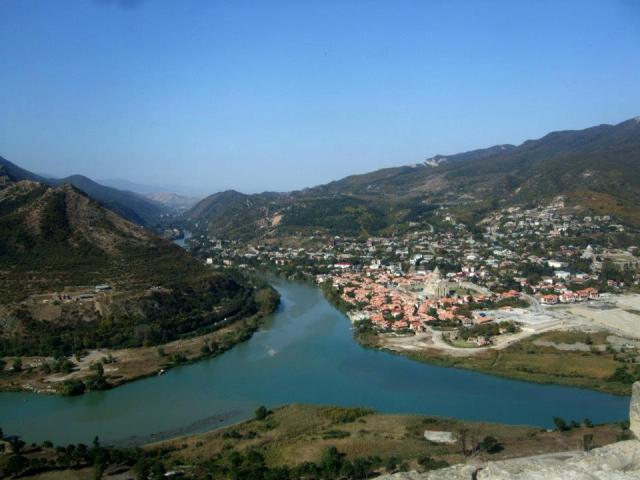



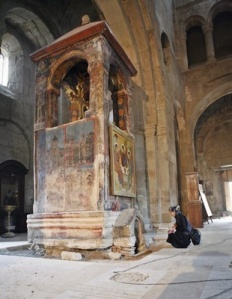
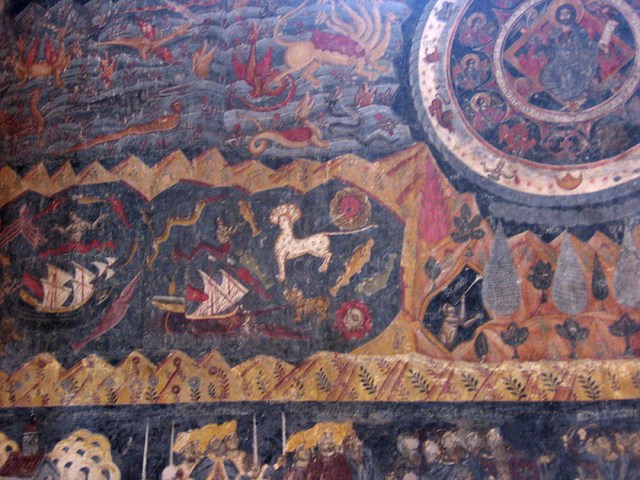








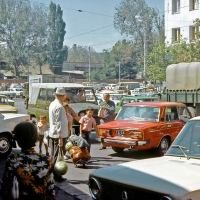
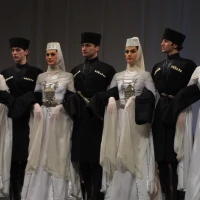

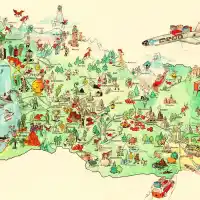

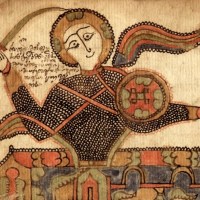







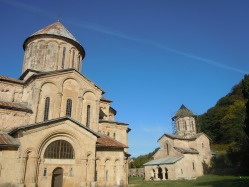

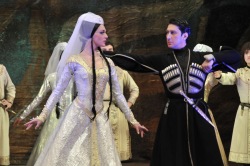







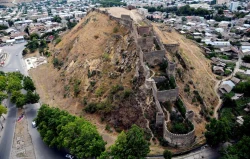



























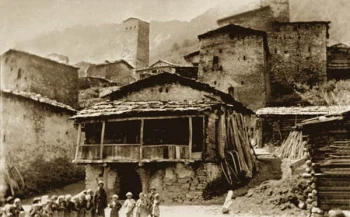

I hope you turn all this good stuff into an e-book.
I have been thinking about that.
Stunning!
Thank you Dianda. It is a beautiful cathedral with an amazing history.
So beautiful!
It is Anarya and so rich in history.
Definitely – would LOVE to visit one day :). Georgia is so full of history.
Fascinating – how long will you be in Georgia?
I live here. Georgia is my home.
sorry, probably knew that – George is lucky to have you! and of course, let us not forget Bassa!
Great history, very interesting! I’d always thought a Holy Land trip would be “the” thing to do, but the more I read about Georgia I think I might like that better. I love the architecture of the churches and cathedrals, and the story behind this one in particular is fascinating. Thank you!
I am sure you would love it here Lisa. There is such a rich history and culture.
It is gorgeous and you did a beautiful job describing it. I think you should approach your government for a job. I’m finding myself more and more wanting to go to Georgia. 🙂
Thank you Jodi. I would love to do more to promote this beautiful country.
What an enjoyable read this was. The pictures are wonderful. Hugs
Thank you Mumsy. It is a pleasure to show Georgia’s heritage to people around the world.
You are doing such a fabulous job of documenting this complex and beautiful country!
Thank you!
What a amazing and holy place! I love Christian history and all the mystical happenings in the past. It is amazing how old the cathedral is and how many ppl have worshipped there through the centuries. THose murals are awesome! Thank you for posting this beautiful piece. 🙂
Thank you Chuck. Georgia adopted Christianity in the earl 4th century A.D. and is the second oldest Christian country after Armenia.
I sure would love to visit that cathedral.
Georgia has so many amazing churches and cathedrals, often located in the most beautiful settings.
The story of St Sidonia and the enomous cedar tree makes me feel visiting Svetitskhoveli Cathedral !!! 🙂
It is an amazing story Kevin.
It is.